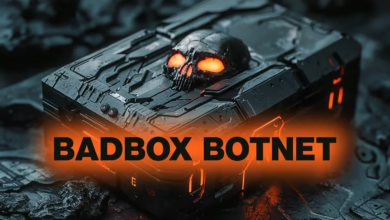#Infosec2025: Why Endpoint Security Remains Critical Against Evolving Threats

▼ Summary
– Endpoint devices like PCs, mobile phones, and IoT equipment remain security risks, despite increasing attacks on other enterprise technology areas.
– Endpoint security is often deprioritized due to expanding attack surfaces and sophisticated AI-driven threats, but endpoints and networks remain critical to protect.
– Older devices, unpatched software, and poorly managed mobile endpoints create significant vulnerabilities, with identity management being a major challenge.
– Modern defenses like EDR tools have reduced the effectiveness of conventional attacks, but ransomware has evolved into more targeted, destructive threats.
– Supply chain security, identity management, and securing IT/OT convergence are now top priorities, even in cutting-edge industries like aerospace.
Endpoint security remains a critical defense layer as cyber threats grow more sophisticated, targeting everything from corporate laptops to IoT devices and supply chain vulnerabilities. While organizations focus on emerging risks like AI-powered attacks, neglecting endpoint protection leaves dangerous gaps in enterprise security postures.
Identity breaches and compromised credentials now serve as primary attack vectors, with phishing campaigns and social engineering tactics enabling ransomware deployments and system takeovers. Analysts warn that even corporate-owned devices often suffer from poor patch management, outdated software, and inconsistent security controls—especially with the proliferation of BYOD policies.
Modern endpoint detection and response (EDR) tools have reduced the effectiveness of conventional malware, automating threat containment at machine speed. However, adversaries have adapted, shifting from indiscriminate ransomware worms to precisely targeted payloads triggered during extortion attempts or data theft operations.
The convergence of IT and operational technology (OT) expands the attack surface, particularly in sectors like aerospace and advanced manufacturing. Digitally enabled industrial equipment and international supply chains introduce new risks, requiring security strategies that extend beyond traditional network perimeters.
Proactive measures like “disposable endpoint” architectures allow rapid device redeployment after compromises, while investments in identity governance and backup systems mitigate credential-based breaches. As threats evolve, organizations must balance emerging security priorities with foundational endpoint protections—especially for mobile fleets and legacy systems that remain vulnerable to exploitation.
Supply chain vulnerabilities and machine identities demand equal attention, as attackers increasingly target third-party integrations and automated system accounts. With ransomware gangs refining their tactics, comprehensive endpoint security now hinges on integrating advanced EDR, rigorous access controls, and resilient recovery protocols across hybrid environments.
(Source: Infosecutity Magazine)
